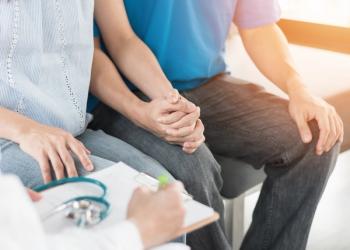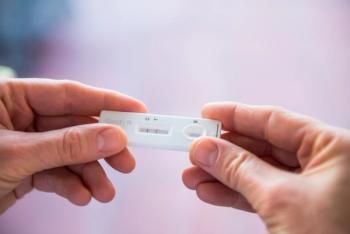
Europe Leads the World in ART and the European IVF Monitoring Group Initiates Follow-up Study o
From the Annual Conference of the European Society of Human Reproduction and Embryology in Rome
Rome, Italy: Europe leads the world in Assisted Reproduction Technology (ART) with most cycles initiated in the region, the 26th Annual Meeting of the European Society of Human Reproduction and Embryology heard today (Wednesday 30 June).
According to data presented by the European IVF Monitoring Group (EIM), 479,288 treatment cycles were reported in 32 European countries in 2007 . This compares globally with 142,435 cycles from the US and 56,817 cycles from Australia and New Zealand. “The number of cycles performed in many developed countries has grown by 5-10% per annum over the last 5 years,” said Dr. Jacques de Mouzon, chairman of ESHRE’s EIM. “The 4.5% increase we observed in Europe from 2006 to 2007 however is partly due to more clinics reporting to our database,” he added.
In 28 countries where clinics reported deliveries, more than 90,000 babies were born in 2007. There were 118,667 regular IVF treatments, 246,687 intracytoplasmic sperm injection (ICSI) cycles, 74,855 frozen embryo transfer cycles (FER), 15,028 egg donor cycles (ED), 6,822 preimplantation genetic diagnosis/screening cycles (PGD/PGS) and 660 in vitro maturation cycles (IVM). “The reverse trend from IVF to ICSI continues with now 67.5% of fresh cycles using the latter technology, although the efficacy of ICSI in terms of pregnancy rates is the same as standard IVF,” he added.
He pointed out that the overall rate of multiple births was very similar to the previous year with European ART twin deliveries at 20.5% and triplet deliveries at 0.8%. Most countries in Europe are now recording fewer than 1% triplet deliveries, except for Italy (2.8%), Latvia (11.1%) and Serbia (3.3%). “The good news is that since 1997, we have observed a decline from 30% to 21% in overall multiple birth rates and a fourfold reduction in triplet deliveries from 3.7% to 0.8%,” he said.
Nordic countries like Denmark still have the highest availability of ART at 13,263 cycles per million of women aged 15-45. The lowest availabilities were recorded in the largest economies in Europe such as Germany (3,931), UK (3,794) and Italy (3,829). This is also mirrored in the number of infants born after ART with only 1.5% in Germany, 1.8% in the UK and 1.2% in Italy. In comparison in Denmark 4.9% of all children were born through IVF.
“In the last 11 years since the beginnings of the EIM we have seen a gradual increase of 26% to 33% of pregnancies per transfer for IVF and ICSI, from 15% to 22% for FER and from 27% to 46% for oocyte donation, and all this despite the transfer of fewer and fewer embryos,” said Dr. de Mouzon.
In order to further assess the safety of ART, the EIM has initiated a major study (MART - the Morbidity in ART study), collecting data from a large series of ART children born in Scandinavia. Funded by ESHRE and the Medical Faculty of Copenhagen University, the team will analyse data from the national ART registers in Denmark, Finland, Norway and Sweden. “We estimate that we will have about 75,000 children in our database at the end. The data from Denmark and Finland are ready, the Swedish will finalise their data soon and in Norway the application to obtain these data is currently being processed,” explains Prof. Anders Nyboe Andersen, past chairman of the EIM.
Due to the possibility of cross-linking ART data with data from other health registers, the researchers will be able to assess long-term morbidity in these children and compare it with appropriate control groups. “It is the long-term commitment of the EIM to expand this database to other European countries, but it will be at least a year before we can present the results to the public,” Prof. Nyboe Andersen concluded.
References:
Abstract no: O-203 & O-202 Wednesday 8:30 hrs CEST (Hall 8 Room A)
The EIM report for 2006 was in press as this press release was being prepared. The 2007 data, although presented at the 26th Annual Meeting in Rome, will not be published until later this year.
Assisted reproductive technology and intrauterine inseminations in Europe, 2006: results generated from European registers by ESHRE. Human Reproduction, Online publication reference: doi:10.1093/humrep/deq124
In English and French:
Mary Rice:
Tel: +33 (0)3 21 82 54 44
Mobile: +33 (0)6 68 93 06 50
Email:
In English:
Emma Mason
Tel: +44 (0) 1376 563090
Mobile: +44 (0) 7711 296 986
Email:
In English, German, Spanish, French, Swedish
Hanna Hanssen
Tel: + 32 (0)2 269 09 69
Mobile: + 32 (0) 473 35 33 81
Email:
In Italian and English
Elisa Marcellini
Tel: +39 (0)2 76 11 51 47
Mobile: +39 340 868 96 90
Email:
Press Office: (Sunday 27 June â Wednesday 30 June)
Mary Rice, Emma Mason, Hanna Hanssen, Elisa Marcellini
Newsletter
Get the latest clinical updates, case studies, and expert commentary in obstetric and gynecologic care. Sign up now to stay informed.
















